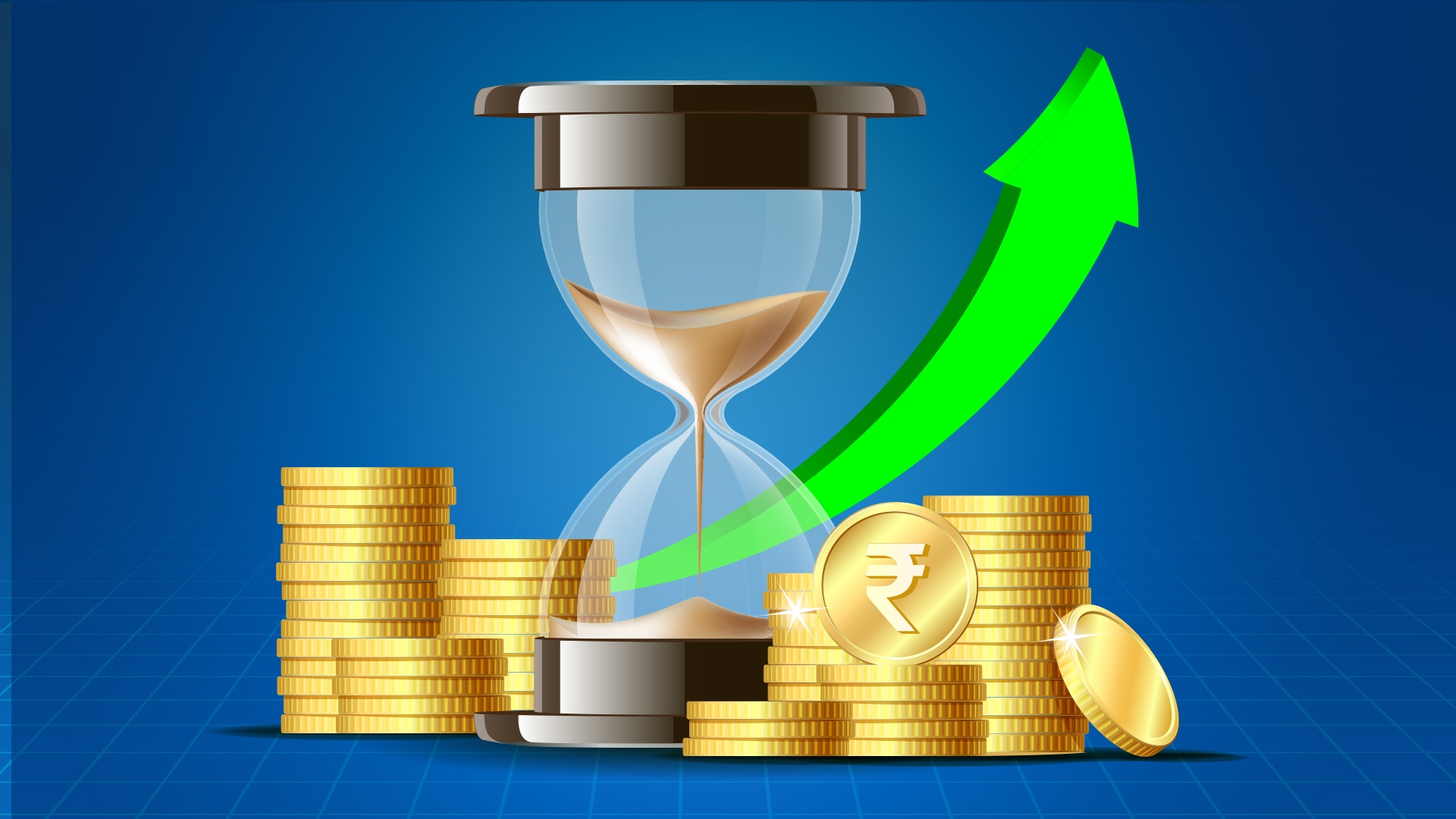Invest in a tax-saving FD issued by a bank and enjoy tax deductions under the Income Tax Act, 1961.
A tax-saving fixed deposit is a special type of fixed deposit that allows you to grow your savings while also offering tax benefits. Under Section 80C of the Income Tax Act, 1961, you can claim a deduction of up to ₹1.5 Lakhs on your principal investment in a tax-saver FD.
This makes it a popular choice for those looking to combine the security of a fixed deposit with the advantage of reducing their taxable income. These FDs typically have a fixed lock-in period of 5 years, during which the funds cannot be withdrawn.
Here is an example to help you understand how tax-saver FDs work. Let's say you invest ₹1.5 Lakhs in a tax-saver FD at an interest rate of 6.5% p.a. for a 5-year tenor. Here’s how the investment and interest calculation would work:
Principal Amount: ₹1,50,000
Interest Rate: 6.5% p.a.
Tenor: 5 years
Compounding Frequency: Annual
Through the below table, you can see how your FD investment will grow throughout the tenor.
Year |
Principal |
Interest Earned |
Total amount |
1 |
₹1,50,000 |
₹9,750 |
₹1,59,750 |
2 |
₹1,59,750 |
₹10,384 |
₹1,70,134 |
3 |
₹1,70,134 |
₹11,059 |
₹1,81,193 |
4 |
₹1,81,192 |
₹11,778 |
₹1,92,971 |
5 |
₹1,92,969 |
₹12,543 |
₹2,05,514 |
Note: This table is for illustrative purposes only.
Fixed deposit rates determine how much returns you can earn. Check out the tax-saving FD interest rates from some of the top banks. Note that these interest rates are applicable for a tenor of 5 years.
Bank |
Non-senior Citizen (p.a.) |
Senior Citizen (p.a.) |
7.20% |
7.70% |
|
YES Bank |
7.25% |
8.00% |
Disclaimer: The above tax-saving FD interest rates are subject to change at the bank’s discretion. These rates are as of 17th July 2024.
Features and Benefits of Tax-saver Fixed Deposit
Here are the features and advantages you can enjoy when you invest in these FDs:
Tax Benefits
You enjoy a fixed deposit tax benefit of up to ₹1.5 Lakhs per financial year, though the interest earned remains fully taxable.
Secure Saving Scheme
As these FDs are offered by banks and regulated by the RBI, the invested amount is secure
Stable Returns
Enjoy guaranteed returns as the tax-saving FD interest rates do not fluctuate throughout the tenor, irrespective of market fluctuations
Long-term Savings
The mandatory lock-in period helps you generate sufficient returns across the tenor
Interest Payouts
You can choose flexible options in the form of monthly or quarterly payouts depending on the issuer
Ease of investment
Simple application process and accessibility through various banks
No premature withdrawal
You cannot prematurely withdraw the sum from your deposit, either partially or completely, until the lock-in period is over (except in some cases depending on the bank)
The parameters and paperwork needed for these investment avenues may vary between banks. Generally, they adhere to certain common parameters, which include:
1. Eligibility Criteria
Residential status: Resident Indians, including salaried and self-employed individuals
Age: At least 18 years old
Investor Type: Individuals and Hindu Undivided Families (HUFs)
2. Documents Required
Identity proof: Aadhaar card, passport, voter ID, PAN card, and senior citizen identification (if necessary)
- Address proof: Utility bills, driving licence, voter ID, Aadhaar card, and passport
While the exact process to book a tax-saver FD will vary among different banks, here are some common steps you may have to follow:
Choose a Bank: Select a bank that offers tax-saver FDs with favourable interest rates
Eligibility Check: Ensure you meet the eligibility criteria, such as being an Indian resident or Hindu Undivided Family (HUF)
Fill the Application Form: Complete the FD application form, specifying the amount you wish to invest and tenor, which will be 5 years by default for tax-saver FDs
Submit KYC Documents: Provide necessary KYC documents, including PAN, Aadhaar, and address proof
Deposit the Amount: Transfer the amount from your savings account to the FD
Receive the FD Receipt: After processing, you'll receive an FD receipt, which serves as proof of your investment
Avoiding taxation on fixed deposits involves strategic financial planning. Here are some strategies you could follow:
Submit Form 15G or 15H
You can submit Form 15G (if below 60 years) or Form 15H (if above 60 years) to the bank to declare that your total income is below the taxable limit. This exempts you from TDS.
Distribute Investments
Distribute your investments across multiple banks to keep the interest earned from each FD below the threshold. The TDS limit has been fixed at ₹40,000 for the general public and ₹50,000 for senior citizens.
Before you invest in a this FD, compare it with some of the other top tax-saving options:
Investment |
Lock-in period |
Expected Returns |
Tax on Returns |
Unit-linked insurance plans (ULIPs) |
5 years |
Market-linked |
10% tax on gains over ₹1 Lakh for Long-term Capital Gains (LTCG) |
National Pension Scheme (NPS) |
Until retirement |
Market-linked |
EEE exemption with investment, income, and withdrawals exempt from taxation |
National Savings Certificate (NSC) |
5 years |
7.70% |
Tax deduction on investments of up to ₹1.5 Lakhs The interest earned qualifies for a tax break |
Sukanya Samriddhi Yojana (SSY) |
21 years |
8.20% |
Tax deduction of up to ₹1.5 Lakhs on investments The interest earned and maturity amount are tax exempt |
Public Provident Fund (PPF) |
15 years |
7.10% |
Falls under the EEE category |
Equity Linked Savings Scheme (ELSS) |
3 years |
Market-linked |
Deductions of up to ₹1.5 Lakhs under Section 80 |
Disclaimer: The above tax-saving FD interest rates are subject to change. Kindly check the latest rates on official government or bank websites.
When a tax-saving FD matures after its 5-year lock-in period, you have the option to withdraw the maturity amount or reinvest it. The principal and interest are credited to your linked account upon maturity. If you choose to reinvest, you can start a new FD or explore other investment options, but remember that the interest rates and terms may differ.
Auto-renewal is generally not available for tax-saving FDs, so active reinvestment is necessary. Additionally, consider the ₹1.5 Lakh limit under Section 80C, which covers all eligible tax-saving investments in a financial year. If you’ve already reached this limit, reinvesting in another tax-saving FD won’t offer additional tax benefits. Therefore, assess your 80C contributions and financial goals to ensure that any new investment aligns with your strategy, helping you maximise both tax benefits and returns.
A tax-saving FD offers a secure way to grow your savings while reducing your taxable income. However, the interest earned remains fully taxable. These FDs have a 5-year lock-in period, with no premature withdrawals allowed. When choosing a tax-saving FD, compare different banks to find the best interest rates and terms that align with your financial goals.

Frequently Asked Questions
Which FD is best for tax saving?
You can invest in a 5-year tax-saver FD to get deductions of up to ₹1.5 Lakhs per financial year u/s 80 of the Income Tax Act, 1961.
What happens to the amount when a tax-saving FD matures?
Once your tax-saving FD matures, the bank directly transfers the maturity amount to your linked bank account. It includes both the principal and the interest earned. You can use an FD calculator to estimate the maturity amount at the start of the tenor.
What are the risks associated with tax-saver FDs?
While there is little to no risk involved with these types of FDs, there are certain factors you must consider before investing. For instance, the lock-in period of 5 years means that you will not be allowed to access the invested funds.
What are the minimum and maximum amounts one can deposit in a tax-saver FD?
The minimum deposit amount for these FDs vary according to the terms and conditions of the financial institution. However, you can deposit a maximum of ₹1.5 Lakhs in a financial year.
Can you liquidate a tax-saver FD?
These fixed deposits have a mandatory lock-in period of 5 years. They do not allow https://docs.google.com/document/d/1KDKq0GB4c-VH0jYeRvwdL_DBL1M7BQZ-5T8UrCG1iKs/editpremature withdrawals during this period. However, certain banks may allow premature withdrawal in case of the demise of the FD account holder.
What is the tenor of a tax-saver FD?
These types of FDs come with a fixed tenor of 5 years.
Is 5 year FD tax free for 5 years?
You can claim a tax deduction of up to ₹1.5 Lakhs under Section 80C on the principal amount. However, the interest earned during the 5-year period is fully taxable according to your income tax slab.




